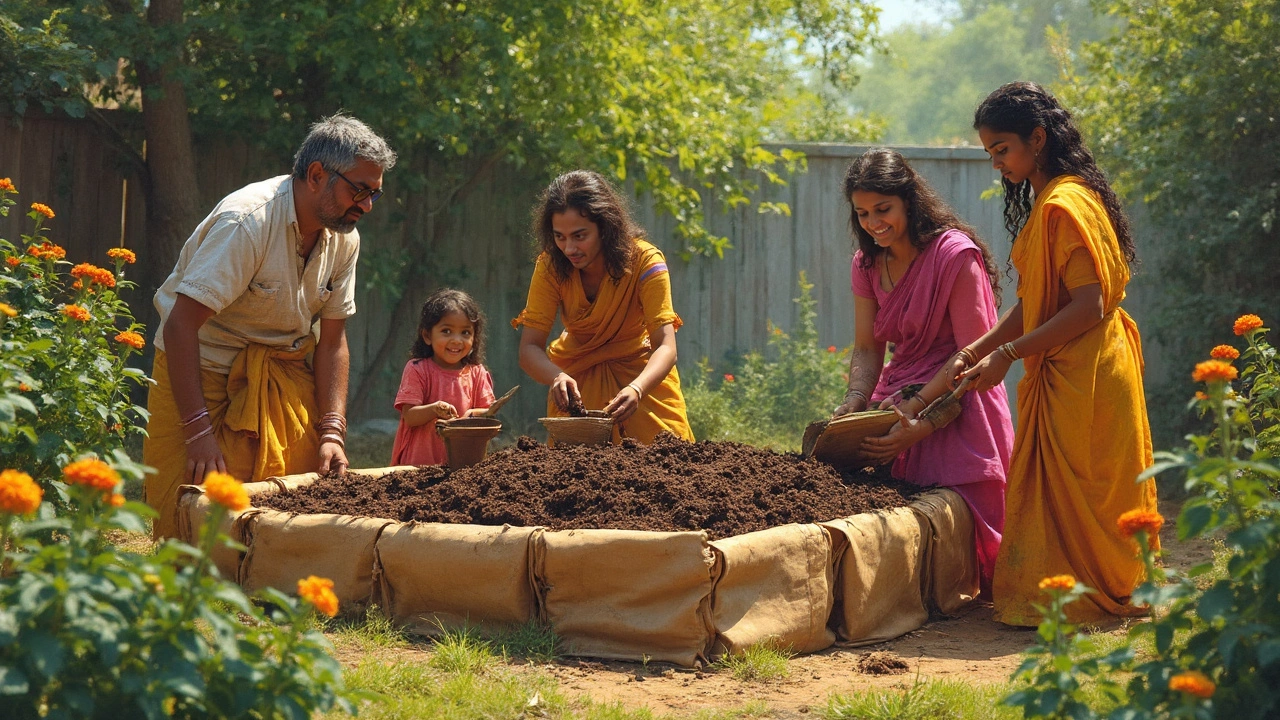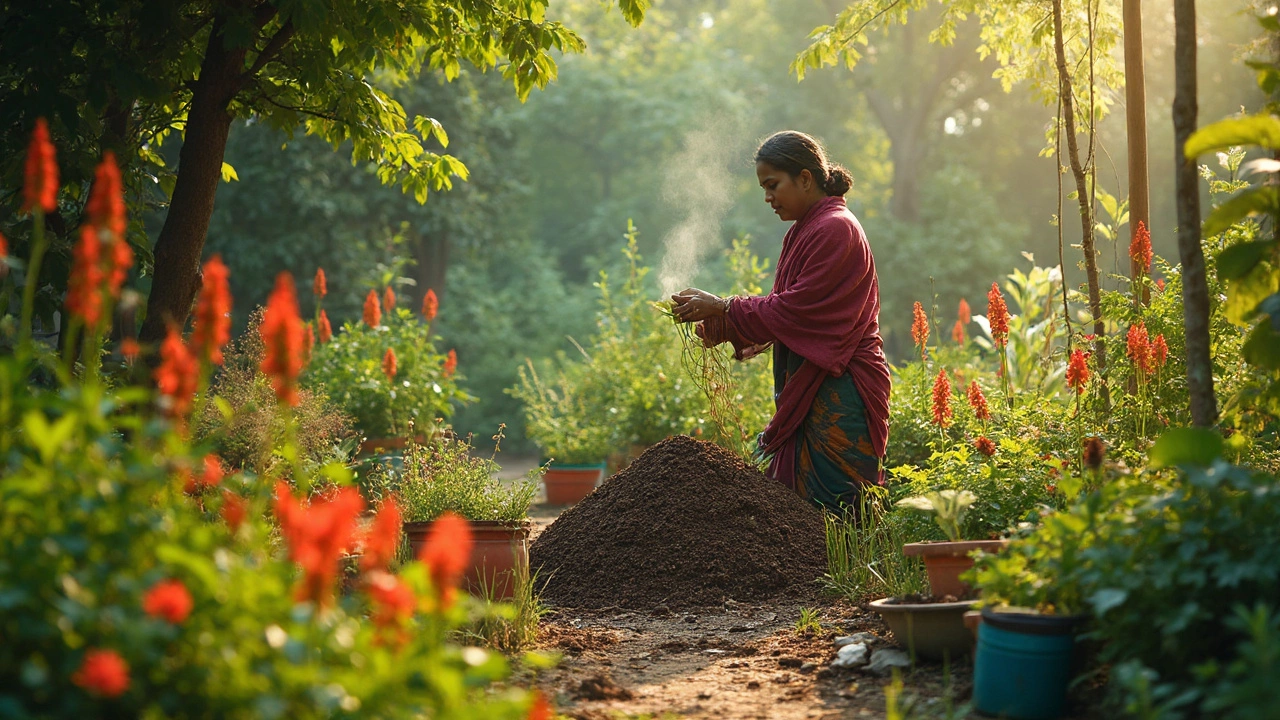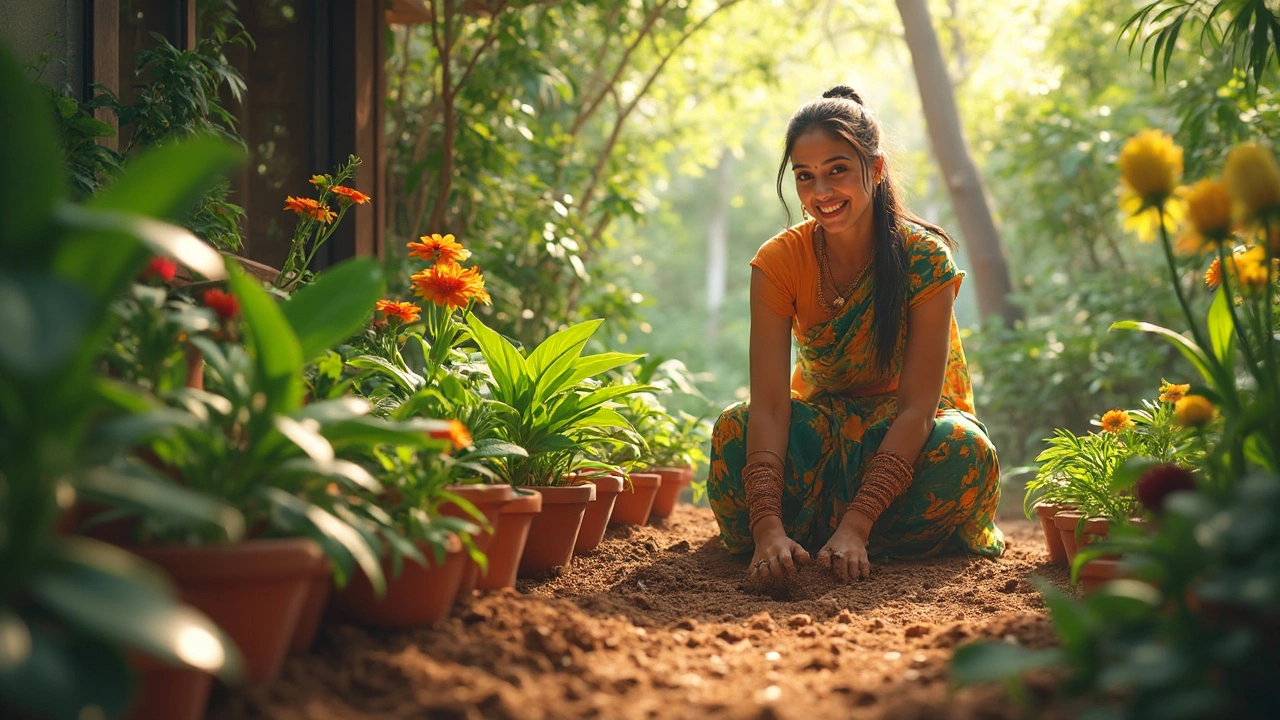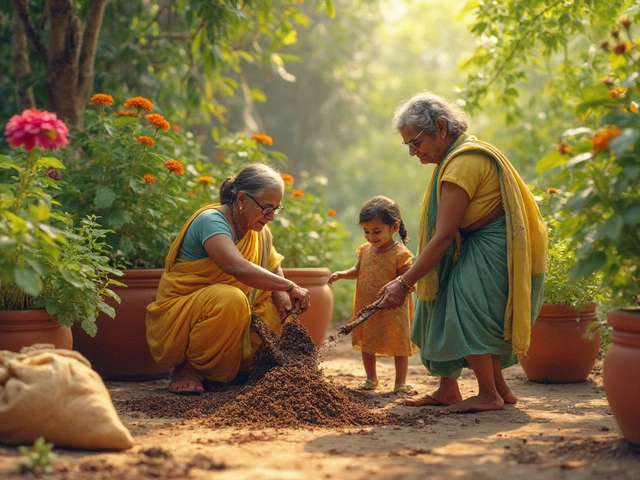Tag: soil improvement

Bulk Up Garden Soil: Real Ways to Make Your Dirt Work Harder
If your plants are struggling or your garden beds look tired, your soil is usually the culprit. This article shows real-life ways to add muscle to your garden soil so plants grow stronger and happier. Expect practical tips, science you can use, and a few secrets experienced gardeners swear by. No fluff, just clear answers for getting better soil. Time to start growing healthier, better crops.

Vegetable Garden Soil: What to Add for Healthy Growth
Starting a vegetable garden? Your soil is the real MVP, and it needs more than just dirt to thrive. This article breaks down exactly what to add to your soil, from compost to smart DIY fixes, so your veggies actually stand a chance. Skip the guesswork—get real tips for better harvests. You'll even learn how to spot if your soil is missing something important.

How to Make Bad Dirt Good: Simple Fixes for Tired Garden Soil
Struggling with hard, lifeless, or sandy soil? Turning bad dirt into rich, productive garden soil is easier than you think. This article covers concrete tips for fixing stubborn dirt, signs your soil needs help, and how anyone can grow better plants with a few cheap tricks. You’ll learn how compost, cover crops, and some everyday kitchen scraps can make a bigger difference than most store-bought mixes. Skip the guesswork and follow these practical steps to healthier garden beds.

How to Fill a Raised Garden Bed Cheaply: Soil Hacks That Save Big
Need to fill up a raised garden bed without dropping a ton of cash? This article covers dirt-cheap methods to get the job done, including what to use as bottom layers, where to get free or cheap soil amendments, and how to boost your soil quality on a shoestring. You’ll learn which materials are safe and which to skip. Save cash, recycle smart, and grow better plants with easy-to-follow tips.

How to Make Your Own Cheap Soil for Gardening
Making your own garden soil doesn't have to cost a fortune. By using everyday materials like kitchen scraps, fallen leaves, and grass clippings, you can create a nutrient-rich mix that rivals any store-bought option. Discover simple tips and tricks to enhance soil quality and maximize plant growth while saving money. Perfect for home gardeners looking to boost their green space without breaking the bank.

Natural Alternatives to Perlite in Your Garden
While perlite is popular for soil drainage, there are natural alternatives that are eco-friendly and readily available to gardeners. This article explores various substitutes like sand, rice hulls, and pine fines that enhance soil structure and retain moisture effectively. Learn how these materials can benefit your plants without the environmental impact of mining perlite. Discover practical tips on using these alternatives to create optimal soil conditions for a thriving garden.

Should You Add Sand to Garden Soil?
Adding sand to garden soil is a common gardening practice, but is it always beneficial? This article explores when and why you might want to mix sand with your soil, including its benefits and potential drawbacks. Learn about the different types of sand that can affect your plants differently and discover practical tips for achieving the best soil mix for your garden needs. Understand how to balance soil texture to improve drainage and root growth. Delve into the importance of knowing your soil type before making changes.

Can I Just Put Perlite on Top of Soil? Here's What You Need to Know
Thinking about using perlite in your garden? This article explores whether adding perlite on top of soil can benefit your plants. Learn about the advantages, possible drawbacks, and the best practices for incorporating this volcanic glass from nature into your gardening routine. We’ll also look at how perlite compares to other soil amendments, helping you make an informed decision for your green space.

How to Turn Topsoil into Garden Soil for a Flourishing Yard
Turning topsoil into vibrant garden soil isn't just for the green thumbs—it's a game-changer for anyone looking to boost their garden's productivity. By understanding the composition of topsoil and incorporating organic materials, anyone can transform the barren into the bountiful. The process involves utilizing common household compost and natural minerals, ensuring your soil is rich in nutrients and full of life. Plus, a few trade secrets help keep pesky weeds at bay and ensure plants thrive.

Epsom Salt Uses for Plants: Boost Your Green Thumb
Epsom salt, rich in magnesium and sulfur, can be a game changer for gardeners looking to improve their soil and plant health. It's popularly used to provide essential nutrients that help with growth, bloom, and even pest control. This article delves into the fascinating benefits of Epsom salt for plants, covering how it enhances nutrient uptake, boosts plant vitality, and can serve as a practical, cost-effective solution to common gardening issues. Whether you're new to gardening or a seasoned pro, discover how a simple addition like Epsom salt can transform your garden.

Crafting Rich Topsoil: A Comprehensive Guide to Garden Vitality
Discover how to create your own topsoil at home, turning kitchen scraps and garden waste into nutrient-rich soil. This guide covers the essential steps for composting and the impact of microorganisms on soil health. Learn about natural additives that can enhance your topsoil and explore the economic and environmental benefits of recycling organic matter. Perfect for gardeners looking to boost their soil quality sustainably.

Revitalizing Old Soil: Tips for a Thriving Garden
Rejuvenating old soil can significantly enhance your garden's productivity, bringing life back into the ground. This process involves understanding the soil's composition and adding organic matter to improve structure and fertility. Learn how to test soil quality, utilize compost and natural additives, and employ crop rotation to maintain soil health. These techniques can help you turn even the most depleted soil into a thriving bed for plants. By following a few simple steps, your garden can reach its fullest potential.
- 1
- 2
About
garden soil improvement, Garden Soil Improvement, Gardening
Latest Posts


Revitalize Your Garden: Proven Ways to Refresh Tired Soil Fast
By Alden Thorne Jun 26, 2025

Worm Castings: The Secret Weapon for Better Garden Soil
By Alden Thorne May 30, 2025

How to Fill a Raised Garden Bed Cheaply: Soil Hacks That Save Big
By Alden Thorne Apr 27, 2025
